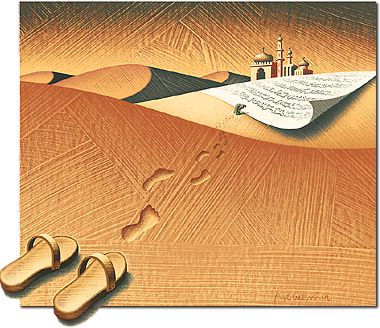Quran Text & History
IN 1972, during the restoration of the Great Mosque of Sana'a, 2in Yemen, laborers working in a loft between the structure's inner and outer roofs stumbled across a remarkable gravesite, although they did not realize it at the time.

Their ignorance was excusable: mosques do not normally house graves, and this site contained no tombstones, no human remains, no funereal jewelry. It contained nothing more, in fact, than an unappealing mash of old parchment and paper documents -- damaged books and individual pages of Arabic text, fused together by centuries of rain and dampness, gnawed into over the years by rats and insects. Intent on completing the task at hand, the laborers gathered up the manuscripts, pressed them into some twenty potato sacks, and set them aside on the staircase of one of the mosque's minarets, where they were locked away -- and where they would probably have been forgotten once again, were it not for Qadhi Isma'il al-Akwa', then the president of the Yemeni Antiquities Authority, who realized the potential importance of the find.
- Hits: 13877






